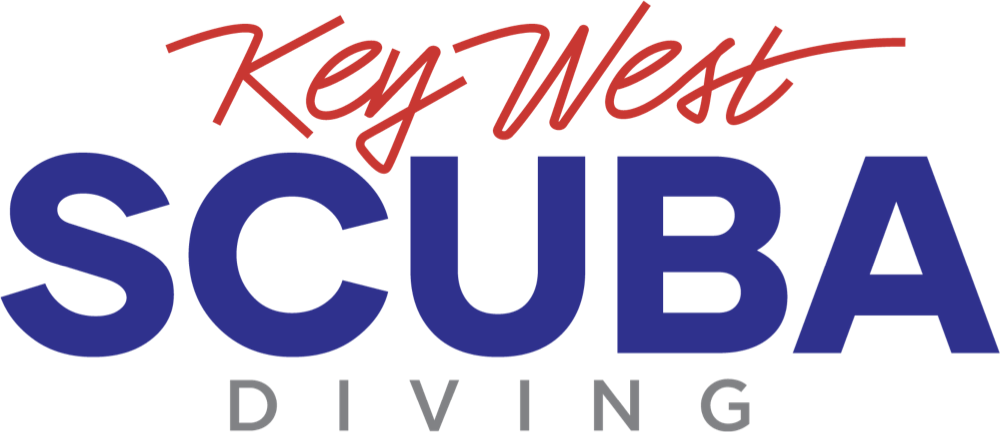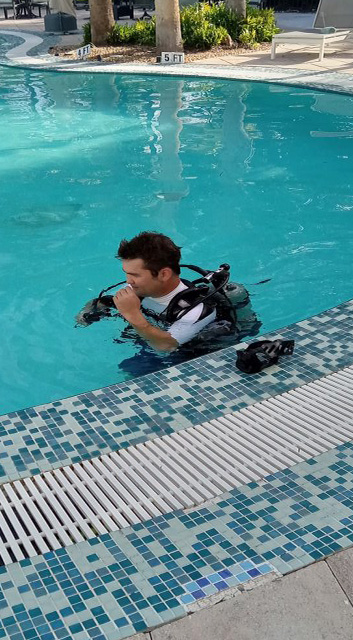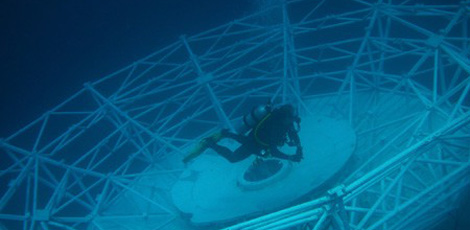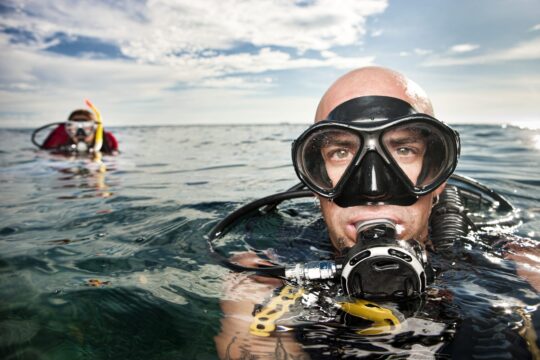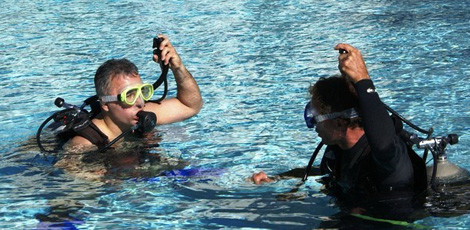Experienced divers come from around the world to go scuba diving in Key West. The island is surrounded by the pristine waters of the Florida Keys National Marine Sanctuary, and there are dive spots suitable for every ability level within a short boat ride. From easy shallow reef dives perfect for beginners to deep shipwrecks like the former US Navy missile tracking ship General Hoyt S. Vandenberg, Key West scuba diving is a major visitor attraction that is nearly as legendary as the island’s party scene.
If you are planning a Key West vacation or are already in town and looking for a day of real adventure, you should try scuba diving in Key West. It’s an experience that just might change your life. And even if you have never put on a pair of fins before, it is easy to get your inner frogman on for the first time with the Key West Dive in a Day PADI® Discover Scuba Resort Course.
This fun one-day introduction to the great sport of scuba diving requires no experience or certification, and believe it or not, anyone age 10 or over who is in reasonable health and can swim will be doing real boat dives on the Key West coral reefs with just a couple hours of instruction. Sounds incredible but it’s true—I did it myself. In this post, I will tell you how things went the day of my first Key West dive trip and give you 10 experience-based tips that will make it even easier for you to dive Key West.
A Scuba Newbie Gets Wet
If you are a complete scuba newbie like I was when I set out on my Key West scuba diving adventure, you might not be aware that scuba is technically an acronym. SCUBA—self-contained underwater breathing apparatus—refers to the tanks, regulator, hoses, and mouthpiece (the second stage or demand valve) that divers use to breathe underwater.
This is one of the first things I learned in my Key West Dive in a Day PADI® Discover Scuba Resort Course while doing what experienced divers call pool work. This part of the course focuses on gear familiarization, diving technique, and safety training, all carried out in a two-hour lesson around and in a beautiful hotel resort swimming pool. A beginner could not ask for a safer, easier introduction to scuba diving.
Insider Tip 1: Can I participate in Discover Scuba?
According to the official PADI® Discover Scuba Diving web page, “Scuba diving requires a minimum level of health and fitness. Chronic health conditions, certain medications and/or recent surgery may require you to get written approval from a physician before diving. Avoid disappointment, download and review the Diver Medical Participant Questionnaire to ensure you won’t need a physician’s approval to dive before enrolling in a scuba course.” Most reasonably healthy people will be good to go for this basic introduction to scuba diving. If you have any doubts, simply take the Medical Examiner’s Evaluation Form found at the bottom of the Medical Participant Questionnaire to your doctor for a signature.
After reserving my course and completing the Diver Medical Questionnaire, all I needed to do was show up at one of the Key West resorts—in my case, the Hilton Garden Inn Key West, easy to find at the intersection of N Roosevelt Blvd and the Overseas Highway. I had my car, so I arrived early at the Hilton to get parked and take in the lay of the land so to speak. Everything turned out to be super easy, and the front desk knew exactly where to direct me for my pool session.
Insider Tip 2: Arrive early to find parking and get set up for the day.
Parking at the Hilton for the pool session is no problem, but after your pool work, you have a couple of hours to grab lunch somewhere, and then you head for the dive shop to check in for your trip. I grabbed a space in a public pay parking lot, but if you are staying in Key West, using a bike or scooter to get around during your entire Discover Scuba Diving Resort Course day is very feasible. This will save you the money and hassle of parking in busy Key West and add to the chill island vibe of your dive trip.
My instructor Palmer showed up poolside right on schedule at 9am, and I discovered that I was the only participant that day. This guaranteed me some high-quality personalized instruction and allowed plenty of time for my questions. It also helped me to get through the pool training in just over 1 hour, given that I was a quick learner and comfortable with the concepts of finding my buoyancy balance and breathing underwater.
Insider Tip 3: What’s the best time of year to do the Discover Scuba Diving Resort Course in Key West?
Take advantage of the off-season in Key West. I found that fall in the pre-and post-Fantasy Fest periods is a quieter time on the island, making for uncrowded conditions most everywhere you go and some good deals on food and lodging. At the same time, the weather is just about perfect; air temps in the 80s have low humidity, and water temps are about the same.
All the dive gear was already on-site in storage by the Hilton pool, and Palmer was great, very friendly and knowledgeable. He had an iPad with an e-learning module presenting the 10 basic learning targets of the PADI® Discover Scuba Diving Resort Course. They focus on diving fundamentals, underwater communication, and safety. There is a 10-question quiz on the material, but you get to repeat the quiz after you complete the work with the dive gear in the pool, so it is a breeze.
Insider Tip 4: Prep online to get the most out of your Discover Scuba Diving Resort Course.
Look into completing the 20- to 30-minute e-learning module online before the day of your course if you want a head start and confidence boost or are really excited to start learning about scuba. Or just to get the adrenaline pumping for this cool adventure.
After I got familiar with how all the gear went together and worked, we practiced in the pool with a focus on descending and ascending while maintaining stable buoyancy. I also learned how to communicate underwater with hand signals, clear water from the dive mask, switch to the alternate second stage, and other practical skills that soon become second nature to the experienced diver. I found that the Discover Scuba Diving Resort Course pool session is all about helping new divers become competent, comfortable, and safe underwater. Palmer was successful in meeting these teaching objectives with me.
Insider Tip 5: Have fun playing with scuba gear in the pool.
Enjoy and take full advantage of your pool work practice time. Ask your instructor about anything, and get some hands-on experience with the gear. Build confidence and familiarity in the pool where everything is completely controlled and very easy. Later, when you go on your open-water dives, being super calm and relaxed underwater along with keeping struggles with your gear to a minimum will make your tanks of air last a lot longer.
With the pool training completed, I had plenty of time to spare before the boat trip meet-up time of 1pm, so I grabbed a sandwich for lunch at a nearby supermarket then just cruised around town a bit. I was in my car, so I got down near the marina early thinking it might be a hunt for parking, but lucked into a spot just as someone was pulling out. It was $5 bucks an hour or $40 for 10 hours, but that’s Key West parking for you.
Honestly, biking around the island is the way to go because bike parking is free and plentiful on Key West, and all you need to carry is a small backpack with your towel, windbreaker or sun shirt, and other personal items. Prepare for a sunny and possibly breezy boat ride, and a full afternoon on and in the water. Don’t forget the reef-safe sunscreen.
Insider Tip 6: Pack a drink and snack for your dive trip.
There will be drinking water on the boat, but you might want to hit a market if you want your own beverages, and extra water is nice to have because the saltwater leaves you thirsty after a dive. Some snacks would also be nice, and I am sure a beer tucked in your pack would cause no problems if opened only on the ride back to port after all diving is complete. Binoculars for bird and wildlife spotting would be a great addition.
Diving in a Day: We Head Out to the Reefs
The dive boat was a nicely-equipped modern 50-footer with a shaded lower gear deck and an upper sun/observation deck. On my Discover Scuba Diving Resort Course day, it turned out that I was one of only two beginners on board with a group of experienced divers. Our first dive spot was the Sand Key Lighthouse just a few miles southwest of Key West. It is surrounded by coral reefs and is a very popular snorkel and dive spot.
After the boat moored, everyone started gearing up. I got my wetsuit and dive gear on with no problems, and the boat crew and dive guides were very accommodating and helpful. They ensured that everyone got their gear on properly and did a final equipment check on each diver before they entered the water. The Scuba Pro dive gear on the boat was nice. It was in great condition, and I can see why different sets of gear are used for the boat dives and pool work—the pool gear suffers a bit from the constant chlorine exposure.
Insider Tip 7: Suit up for your dives.
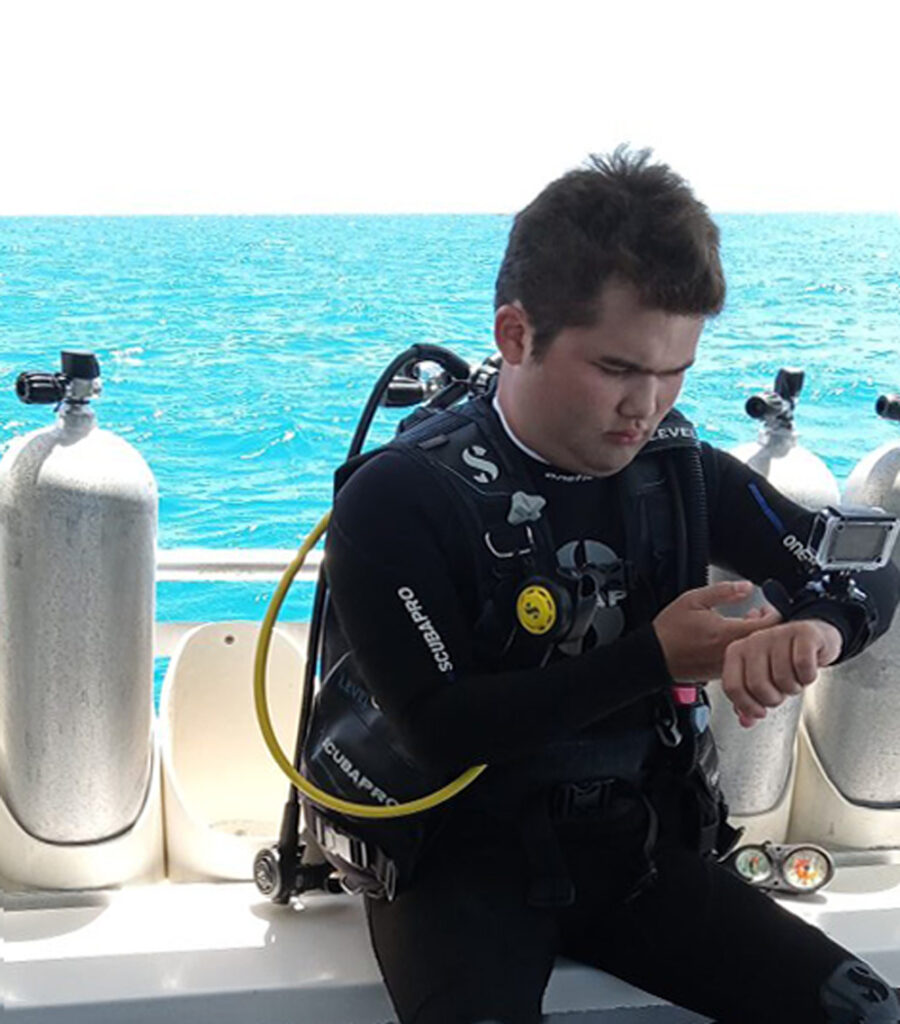 Even in the warm waters of Key West, wearing a wetsuit is a good way to go for beginners, especially in the fall and winter seasons. It may be hot up top, but the water always gets cooler with a little depth, and you will be down there for up to 45 minutes or so. The wetsuit also provides protection against bumps, bruises, scratches, and sun.
Even in the warm waters of Key West, wearing a wetsuit is a good way to go for beginners, especially in the fall and winter seasons. It may be hot up top, but the water always gets cooler with a little depth, and you will be down there for up to 45 minutes or so. The wetsuit also provides protection against bumps, bruises, scratches, and sun.
After a final check and ok from the dive master, I moved to the platform at the stern of the boat and got ready to step off into the water. It can feel a little unsteady at first standing and walking around on a boat with all that gear on, but the boat crew and dive guides are always nearby to lend a hand.
Insider Tip 8: Take every opportunity to learn more.
When prepping on the boat, try to get your dive gear on and adjusted by yourself so you can practice what you learned in the morning. But don’t be afraid to ask the boat crew members or dive guides for a hand if needed because they are more than willing to help out any way they can. And keep an eye on how the guides and other experienced divers do things. You can pick up a lot that way.
Entering the Undersea World
With the a helping hand from the boat captain and my instructor, I stepped to the stern of the boat, inflated my buoyancy control vest, inserted my mouthpiece, and braced my mask with one hand while stepping off the platform into the clear, warm water. Bubbles streamed up all around as I dropped a few feet then quickly popped to the surface. I cleared away from the area near the dive platform and looked around to spot the other two divers in my group. Gathering near our guide, we all signaled ok, then floated there while waiting for the signal to descend.
As it happened, Palmer, my instructor from the pool session, was also the dive guide for our little group, so that was nice. He gave us the signal, we all let a little air escape from our BC vests, and gently drifted down into an amazing underwater world. Using my BC to level off at the same depth as my guide, I looked around. It was like being in a vast aquarium.
The waters around Key West are protected by the Florida Keys National Marine Sanctuary, so marine life is abundant, and hundreds of species can be seen on any dive. I saw lots of colorful tropical fish on all sides as I moved over the strange coral formations. I spotted some fairly large Barracuda, a Morey Eel, and a huge, fantastic-looking Jellyfish. Being a first-time diver, there were a lot of fish I could not identify, but it was really incredible down there.
Palmer was always nearby, and often caught my attention with hand signals to check that I was ok or point out some interesting sight. We reached a maximum depth of about 35 feet, and explored the reef together until Palmer gave the signal to surface. Inflating our BC vests gradually to rise slowly, we blew bubbles from our mouthpieces as the water pressure decreased and the air in our lungs expanded.
We popped to the surface and kicked our way over to the dive platform. The boat crew was ready at the ladders to help us all aboard. I took my fins off in the water and climbed up, with a crew member grabbing the strap on my BC vest to help ease the weight of the tanks. My first real scuba dive lasted close to 45 minutes, and I was never nervous or uncomfortable at all.
Insider Tip 9: Take advantage of your expert local dive guides.
Once you are a certified, experienced diver, you can dive on your own, and there are buoys and ropes in the water that make it easy to go down and back up to the boat. But I strongly recommend using a dive guide to take advantage of their in-depth knowledge of the dive spots. Palmer and Tom, the dive instructors guiding on my trip, were first class. You might want to call ahead to make sure guides are available on the day of your dive trip. It is also customary to bring a little cash to tip your guide and the boat crew at the end of the day.
Our second dive was at a spot called Eastern Dry Rocks. It is not too far from the Lighthouse, and there were a few other dive boats at the site. This was a cool dive because we could swim in among these reef formations that reached up almost to the surface on each side. There seemed to be a fish or some other creature in nearly every crack and hole in the reefs. Everything went well. I was starting to feel like a veteran diver already, and I could easily see why so many people love this sport.
I’ll Be Back
We got back to port in the late afternoon after a successful two-tank boat dive trip. The weather was fine, visibility was 15–20 feet or so (which is not bad for fall/winter when the shallow areas get stirred by the wind), the boat and gear were great, and my Discover Scuba Diving Resort Course experience was all I hoped it would be.
I was feeling pleasantly fatigued, but still had an evening drive back up the Overseas Highway to my home north of Miami. I have to say it was nice to have everything taken care of at the end of the day so I did not have to worry about washing and packing up dive gear or anything else. That’s one of the great things about all-inclusive dive packages like the Discover Scuba Resort Course.
Insider Tip 10: Target the best conditions for your dive trip.
If you are planning your Key West scuba diving trip with a focus on a first-time diving experience, it is a good idea to do a little homework. Learn about seasonal weather and visibility conditions, the type of interesting migratory marine life like Sea Turtles, Dolphins, Sharks and so on that might be around based on the time of year, and other background information that will let you get the most out of scuba diving in Key West. On the days you go out diving, the dive boat captain will always choose the best spots based on weather and water conditions. But for your overall Key West trip planning, watch the weather and look for a window of calm, clear conditions when the water is still and dive visibility is at the maximum.
I enjoy a variety of outdoor sports, and the Discover Scuba Resort Course left me interested in becoming a PADI® certified scuba diver. The diving lifestyle is definitely attractive—exploring beautiful ocean-side spots around the world, learning more and more about all the amazing sea creatures, enjoying underwater adventures with new dive buddies, and making memories that will last a lifetime. It’s no wonder more than 28 million people have become PADI® certified scuba divers since the association’s founding in 1967.
The complete Discover Scuba Diving Resort Course course package is perfect for a new diver and takes only 1 day. But I can easily imagine how fun Key West would be for a certified diver. You know—spend a night or two on the island, maybe browse around the dive shops a bit, hit some happy hours, and look forward to exploring more incredible dive spots.
Become a Certified Scuba Diver in Key West
I am lucky enough to live near the beach in mainland Florida, so I will probably do any further dive course work near home, then return to Key West as a certified diver. But Key West is an excellent place to stay a few days and get your PADI® Open Water and Advanced Open Water Diver certifications. It’s a fun island city, small and easy to get around in without a car, and the variety of available dive sites is unmatched anywhere else in the continental US.
The great thing about taking PADI® scuba courses in Key West is that you get to do all of your qualifying dives at world-class sites. Once you are certified, you can go right out to dive deep reefs, coral caves and walls, and several wrecks including the 500-foot long General Hoyt S. Vandenberg. It’s the largest wreck in the Keys and sits just 6 miles SSE of Key West, upright on sand with its keel at 140 feet and upper structures at 60 feet or so.
I give the Key West Dive in a Day PADI® Discover Scuba Resort Course two thumbs up, and would like to thank Palmer and the rest of the crewmembers who made my Discover Scuba Resort Course and first boat dives so easy, safe, and fun. Now that I have a start into the amazing undersea world of scuba diving, I have a recommendation for anyone looking to tick off a bucket-list item: Dive Key West!
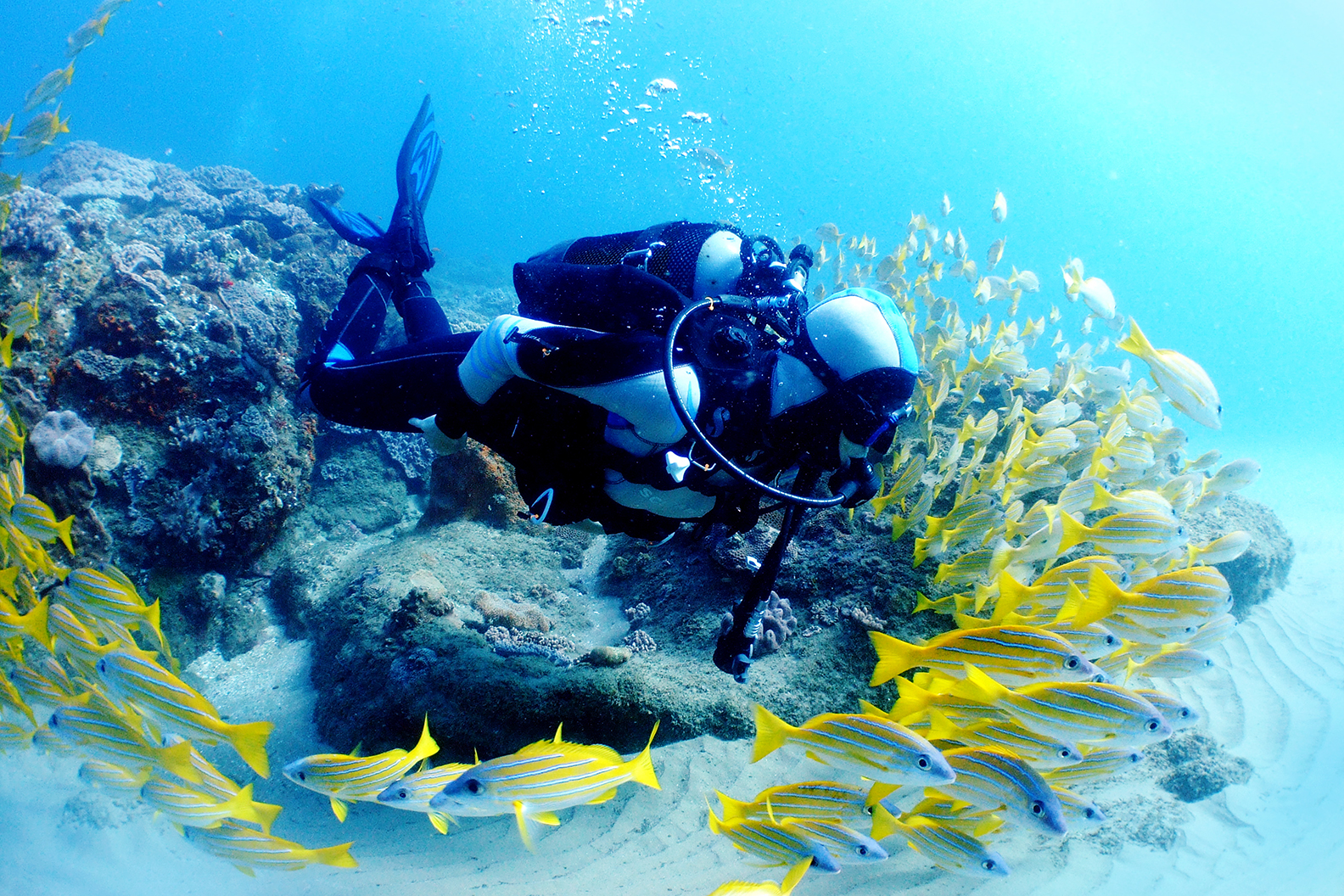
About
Learn about Key West Scuba Diving, read testimonials from travelers like you, and check out our most popular activities.
Learn More
